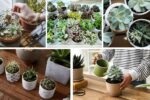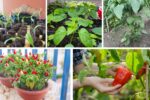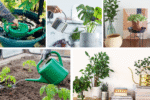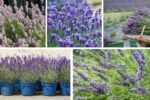Onions are one of the most widely used vegetables in kitchens around the world. From soups and salads to stews and stir-fries, onions add flavor, depth, and aroma to countless dishes. What’s even better? They’re surprisingly easy to grow at home — whether you have a spacious backyard, a raised garden bed, or a few pots on your balcony.
In this comprehensive guide, we’ll cover everything you need to know about how to start growing onions, from choosing the right variety to harvesting and storing them successfully.
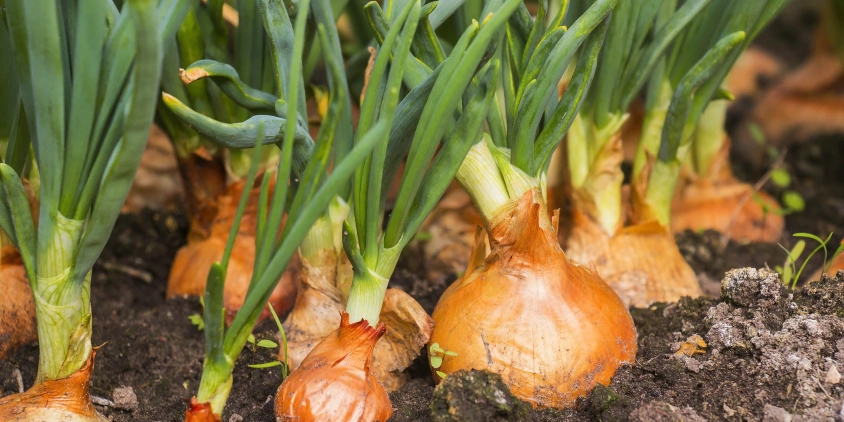
Why Grow Your Own Onions?
Growing onions is simple, rewarding, and practical. These hardy vegetables adapt well to various growing conditions and store well for months after harvest.
Benefits of Growing Onions:
- Low maintenance and beginner-friendly.
- Versatile: Can be grown in gardens, containers, or raised beds.
- Long shelf-life when cured and stored properly.
- Multiple harvest opportunities — you can harvest green onions, mature bulbs, or even save seeds.
- Natural pest deterrent when companion planted with other crops.
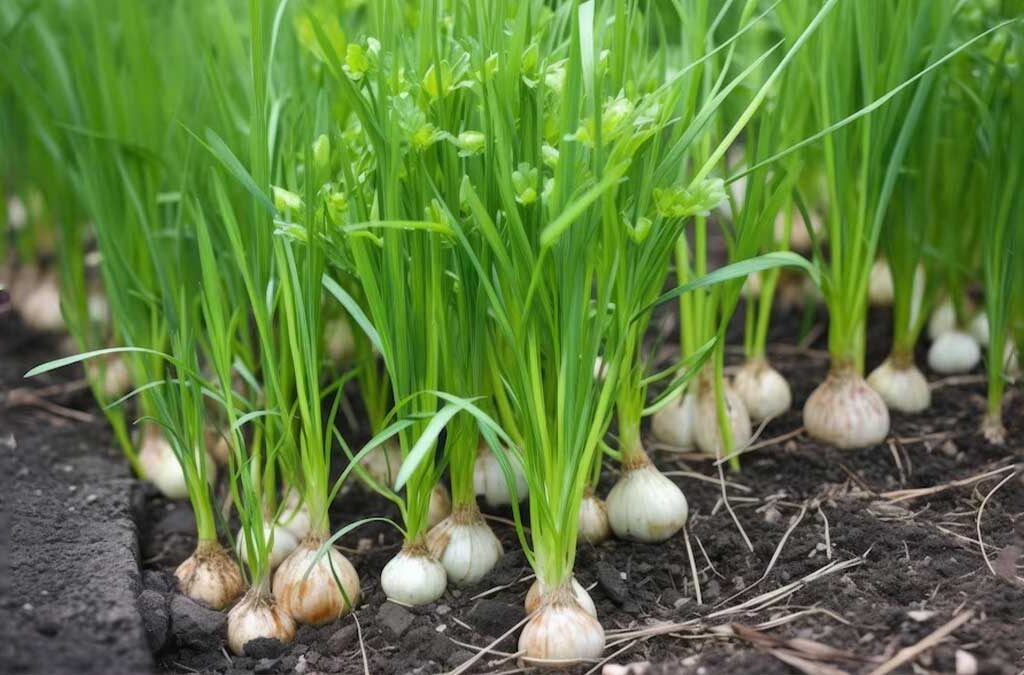
Types of Onions You Can Grow
Before planting, it’s important to choose the right onion variety for your region and needs. Onions can be categorized based on their day length requirements and flavor profiles.
Based on Day Length:
- Short-Day Onions:
- Begin forming bulbs when daylight reaches 10-12 hours.
- Best for southern regions with mild winters.
- Examples: Yellow Granex, Red Creole, Texas Early Grano.
- Long-Day Onions:
- Require 14-16 hours of daylight to form bulbs.
- Ideal for northern areas with long summer days.
- Examples: Walla Walla, Yellow Sweet Spanish, Ailsa Craig.
- Intermediate-Day (Day-Neutral) Onions:
- Suitable for most regions.
- Bulb formation begins at 12-14 hours of daylight.
- Examples: Candy, Red Candy Apple.
By Flavor:
- Sweet Onions: Milder taste, great for fresh eating.
- Pungent (Storage) Onions: Stronger flavor, ideal for cooking and long-term storage.
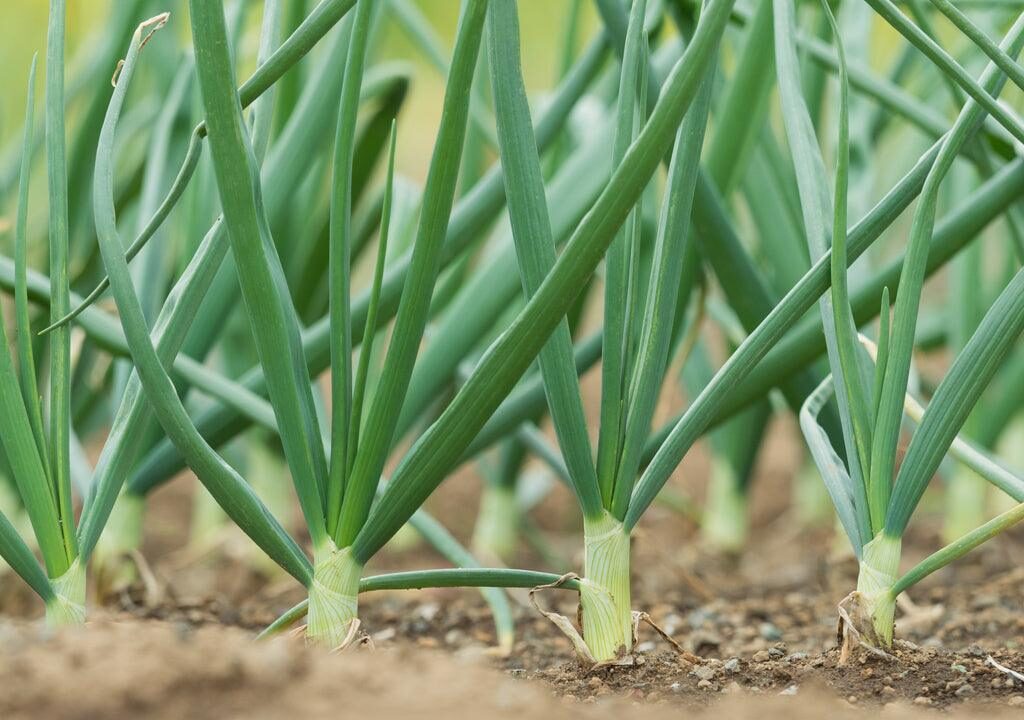
When to Plant Onions
Onions prefer cooler growing conditions for their initial growth and bulb formation as days get longer.
- In mild climates: Plant in late fall or early winter for a spring harvest.
- In colder climates: Start seeds indoors 10-12 weeks before the last frost date or plant sets/transplants outdoors in early spring.
Soil temperature for planting: 45°F–80°F (7°C–27°C).
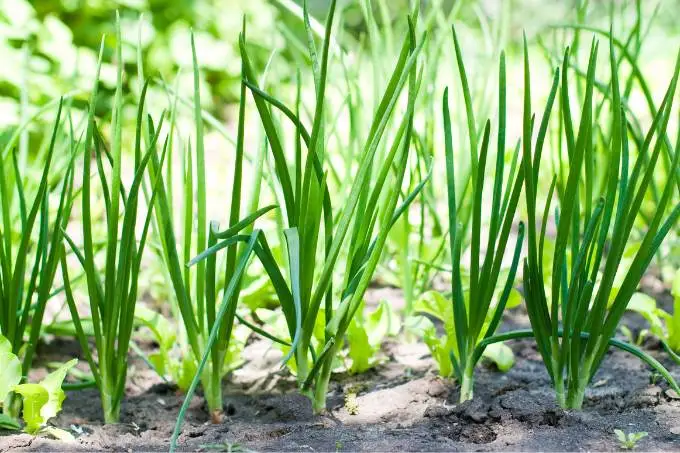
How to Start Growing Onions
You can grow onions from seeds, sets, or transplants.
1. Growing from Seeds:
- Start indoors in seed trays 8-10 weeks before the last frost.
- Use a quality seed starting mix.
- Sow seeds ¼ inch deep and keep moist.
- Provide 10-12 hours of light daily using grow lights or a sunny window.
- Harden off seedlings before transplanting.
2. Growing from Sets:
- Sets are small, immature onion bulbs.
- Easiest method for beginners.
- Plant directly into the garden early spring or fall, depending on your region.
3. Growing from Transplants:
- Purchase nursery-grown onion plants.
- Ideal for those who miss the seed-starting window.
- Transplant when seedlings are about 6 inches tall.
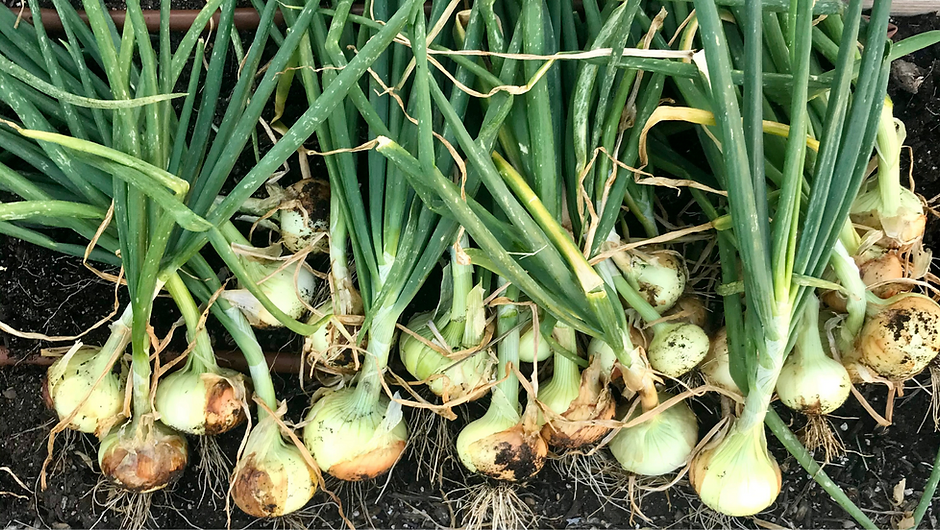
Ideal Soil and Site Conditions
Onions grow best in loose, fertile, well-draining soil with a pH of 6.0–7.0.
Soil Preparation:
- Work compost or well-aged manure into the soil.
- Avoid heavy, clay-rich soils that cause poor bulb formation.
- Raised beds and containers are excellent for controlling soil conditions.
Sunlight:
- Onions require full sun (6–8 hours daily) to thrive.
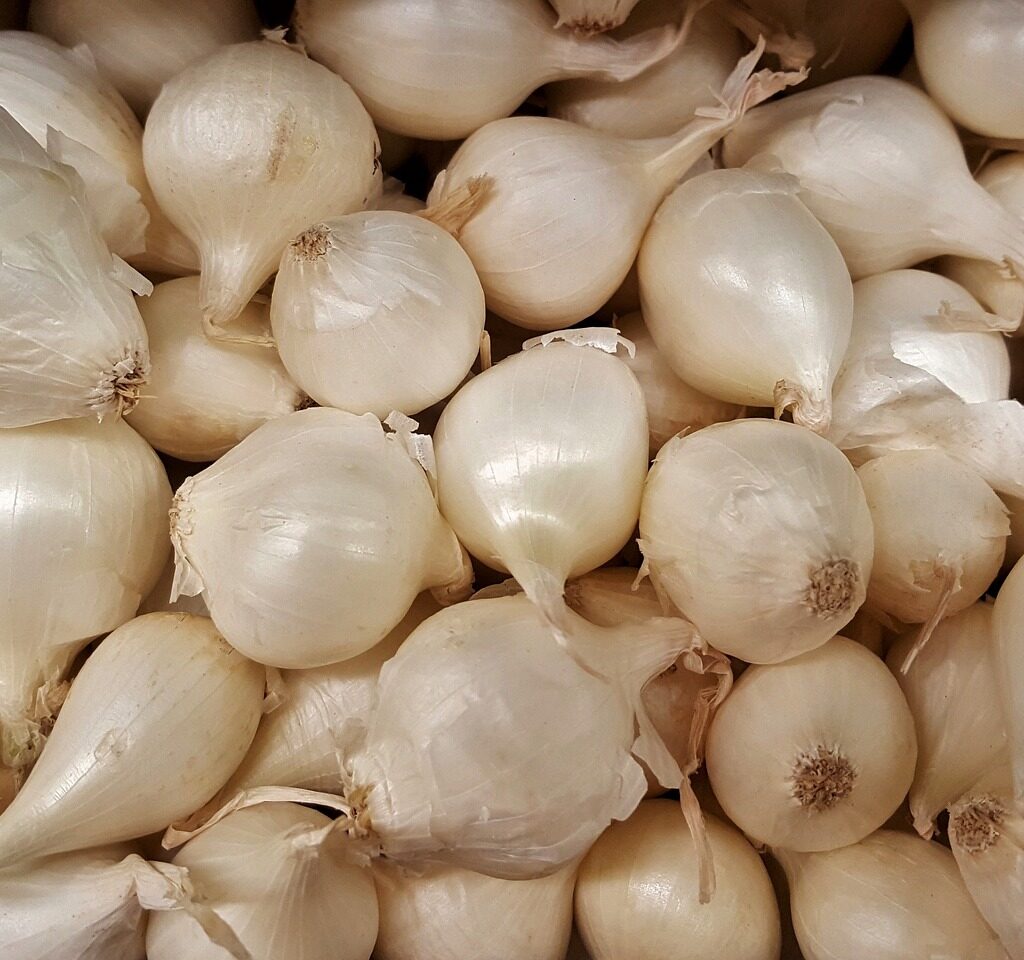
How to Plant Onions
Spacing:
- Space onion sets or transplants 4–6 inches apart in rows.
- Space rows 12–18 inches apart.
Planting Depth:
- Plant sets with the tip just below the soil surface.
- Transplant seedlings at the same depth they were growing in the tray.
Pro tip: Avoid planting too deeply, which can stunt bulb development.
Watering and Fertilizing Onions
Watering:
- Onions need consistent, even moisture.
- Water when the top inch of soil feels dry.
- Avoid waterlogging as it can cause rot.
Fertilizing:
- Use a balanced fertilizer or one higher in phosphorus for root development.
- Side-dress with compost or organic fertilizer every 3-4 weeks.
Common Pests and Problems
| Problem | Cause | Solution |
|---|---|---|
| Onion Maggots | White larvae in soil | Use row covers, rotate crops annually |
| Thrips | Tiny insects damaging leaves | Spray with insecticidal soap or neem oil |
| Downy Mildew | Fungal disease | Ensure good air circulation, avoid overhead watering |
| Bulb Rot | Excess moisture, poor soil | Improve drainage, avoid overwatering |
Companion Planting with Onions
Onions are excellent companions for several vegetables because their scent deters many pests.
Good companions:
- Carrots
- Lettuce
- Beets
- Cabbage
- Strawberries
Avoid planting near:
- Beans
- Peas (onions can inhibit their growth)
How and When to Harvest Onions
Harvesting Green Onions:
- Harvest when tops are 6–8 inches tall.
- Ideal for salads, soups, and garnishes.
Harvesting Bulb Onions:
- Harvest when 50% of the tops fall over and turn yellow.
- Stop watering a week before harvesting to toughen skins.
- Gently lift bulbs with a garden fork.
Curing Onions:
- Spread onions in a dry, shaded, well-ventilated area for 2–3 weeks.
- Once the outer skins dry and necks tighten, trim roots and tops.
Storing Onions
- Store cured onions in a cool, dry, dark place.
- Use mesh bags, baskets, or hang in bunches.
- Sweet onions store for 1–2 months, while pungent varieties last up to 6 months.
Growing Onions in Containers
Short on space? Onions grow well in containers too.
Container tips:
- Use pots at least 6–8 inches deep.
- Provide well-draining potting mix.
- Space onions 4 inches apart.
- Keep soil consistently moist and fertilize monthly.
Pro tip: Green onions are perfect for continuous container harvesting.
Final Growing Tips
- Rotate onion crops yearly to avoid soil-borne diseases.
- Mulch with straw to retain moisture and suppress weeds.
- Keep weeds under control to prevent competition.
- Avoid high-nitrogen fertilizers late in the season — it can delay bulb development.
- Practice succession planting for an extended harvest.
Conclusion
Starting your own onion patch is easy, budget-friendly, and immensely rewarding. Whether you prefer sweet, mild varieties or pungent, long-storage types, onions thrive with minimal care and quickly become a kitchen essential you can grow at home.
With this beginner-friendly guide, you now know how to choose varieties, plant, care for, and harvest delicious onions. So grab a pack of seeds or sets, and get growing — your kitchen will thank you!


